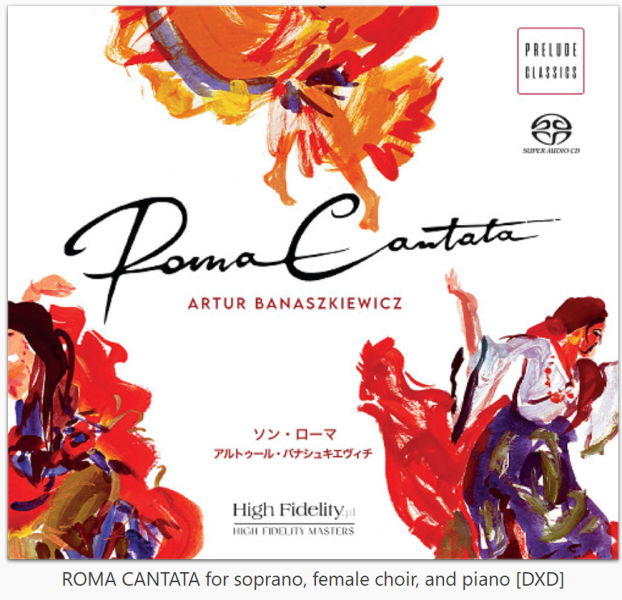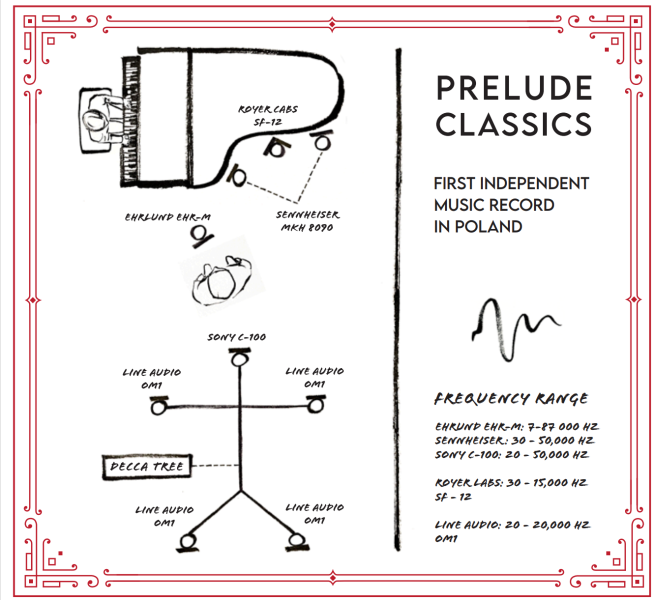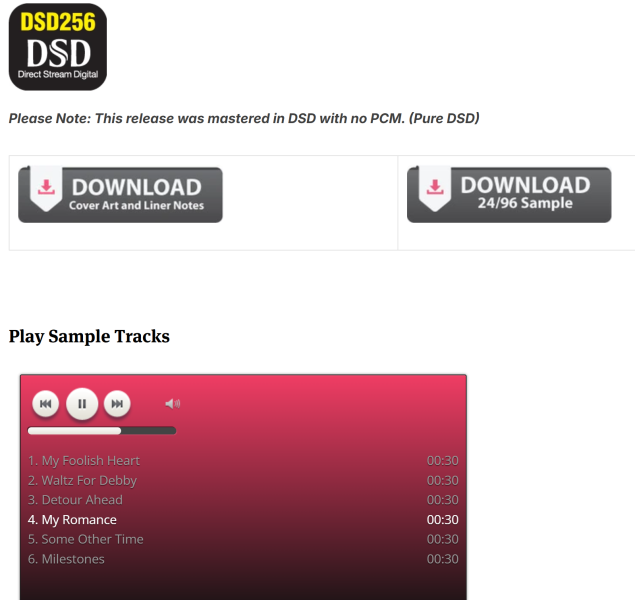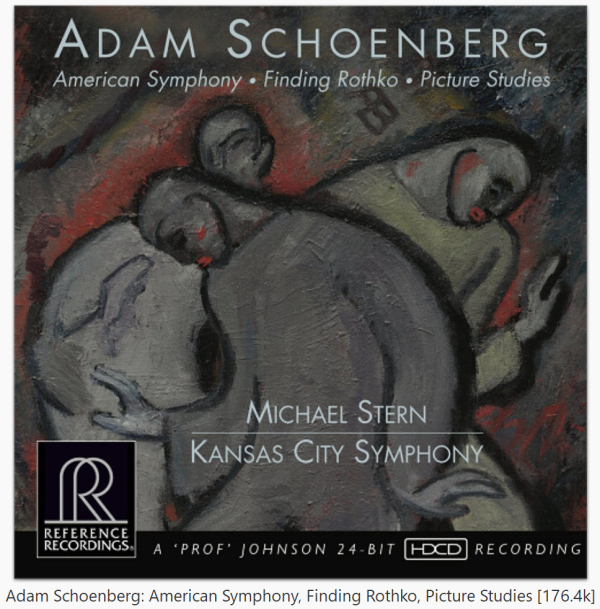I'm listening to a DXD recording this morning from the Polish label, Prelude Classics. And it is very interesting and very nicely done. They have four albums listed at NativeDSD (
HERE) and this is the first one to which I've listened. I will listen to more given how much I am enjoying this. Prelude Classics says their commitment is to very high resolution recordings "guided by the mission of capturing the emotions triggered by the musical experience." So, good mission. And thus far I would say this release is meeting their goal. My only reservation is that sound is very closely miked, leaving little sense of the actual space in which the vocal soloist and pianist exist during their performance. I.e., little sense of the natural acoustic of the recording venue. But, otherwise, the recording is very natural sounding, very transparent.

Roma Cantata is an album featuring compositions by Maestro Artur Banaszkiewicz — a virtuoso violinist and laureate of numerous prestigious awards, including the grand prize at the International Composition Competition in Atlanta, Georgia. The Stereo and 5 Channel Surround Sound recording...

www.nativedsd.com
The music is a dynamic mix of influences found with abundance in the Romani culture. The composer writes that the composition: "takes the audience on a musical journey along the trail of Gypsy wagons travelling across Europe. The music contains Hungarian, Romanian, Balkan, and Spanish elements as well as a reference to Paganini and a paraphrase of Monti’s famous
Csardas with Sprechgesang [the soprano] and scatting in the vocals."
As illustrated in the diagram below, Prelude Classics explain that they use "a modified Decca Tree technique originally worked out by Decca sound engineers in the early 1950s, first commercially applied" by Arthur Haddy and Roy Wallace in 1954, and later improved by engineer Kenneth Ernest Wilkinson." Unfortunately, the spot mics for piano and soprano completely take over the sound of the release album as it has been mixed. Granted, I listen over headphones. But normally I have no difficulty hearing excellent spatial clues and broad soundstages and depth. But here I simply am not hearing what the very respected editor in chief of High Fidelity, Wojciech Pacuła, describes: "The sound has not only a spatial quality (that is, a wide panorama), but also depth. The vocals are definitely more open than the piano, which is placed deeper up the acoustic scene." But, perhaps this comment refers only to the track with the choir.
Still, an excellently detailed and dynamic recording with extended frequency range and unlimited dynamic contrasts, very accurately captured. I'd classify it as a winner, both musically and sonically.
From the enclosed booklet:

Microphones: Ehrlund EHR-M, Sennheiser MKH 8090, Royer Labs SF-12, Sony C-100, Line Audio OM1
Recording, editing and mastering: Pyramix Virtual Studio by Merging Technologies=
Original Recording Format: PCM 352.8kHz 24-bit










